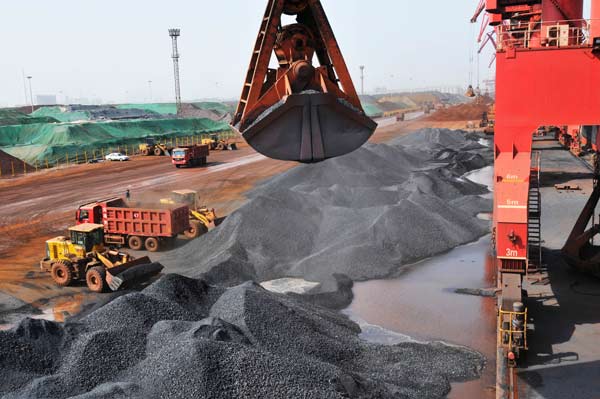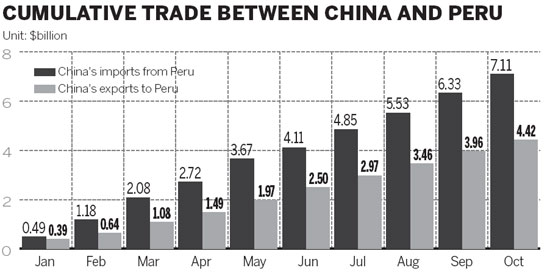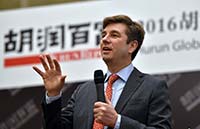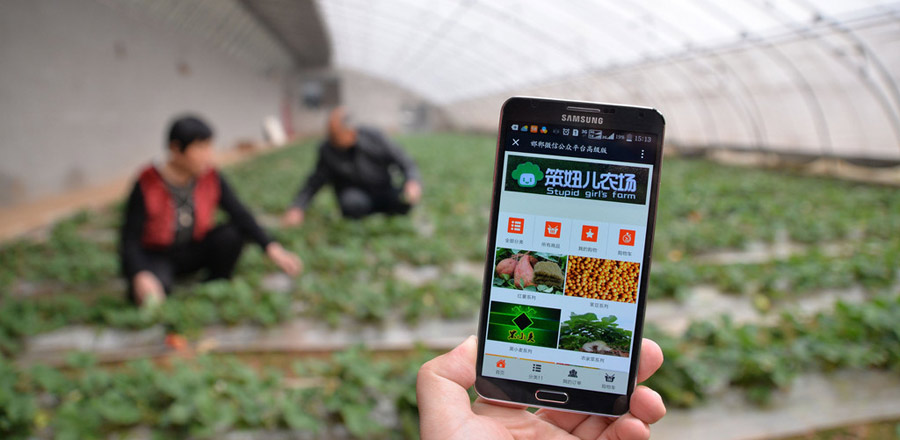Peru expects to diversify exports to China
By Ding Qingfen in Lima, Peru (China Daily) Updated: 2012-12-11 11:04Latin American nation seeks to give foodstuffs bigger role in foreign trade
Peru expects to significantly expand its non-traditional exports to China over the next five years as it strives to reduce the nation's reliance on mineral trade with the world's second-largest economy, a senior trade official said.
|
 |
|
Iron ore imported from Peru is unloaded in Rizhao, Shandong province. Minerals account for around 60 percent of Peru's exports to China, and Peru is striving to reduce its reliance on mineral trade with China. Chen Weifeng / For china daily |
Peruvian Vice-Minister of Foreign Trade Carlos Posada Ugaz said that he hoped that non-traditional goods, including fruit, coffee, asparagus and fishery goods, could increase from the current 5 percent of the nation's exports to China, to at least 30 percent over the next five to eight years.

Currently, 95 percent of Peruvian exports to China are traditional goods, such as minerals and textiles, with minerals accounting for around 60 percent.
"Peru's exports have mainly been mineral goods, but we are committed to expanding sales of non-traditional goods, as this could help us create more jobs," said Ugaz.
And China would be a "big contributor" to the shift, he stressed.
The world's second-largest economy has set its sights on expanding domestic consumption to help sustain its economic growth, given that the export sector, a key driver of China's economic expansion in recent decades, remains weak amid the eurozone debt crisis.
The China-Peru Free Trade Agreement, which came into effect in March 2010, is also expected to give a boost to bilateral trade in non-traditional goods.
"We have the world's best organic food and products," said Ugaz.
Peruvian Minister of Economy and Finance Luis Miguel Castilla said that China's slowing economic growth would affect its demand for the Latin American nation's traditional exports such as iron ore and copper.
China's strategic shift to expand domestic consumption will translate into new demand for non-traditional goods and food from Peru, helping it diversify its exports to China, said Castilla.
Although the slowdown in China's economic growth is believed to have bottomed out, experts suggest the era of rapid growth has become a thing of the past.
In 2011, Peru's total exports of traditional goods increased 25 percent year-on-year to $35.1 billion, with 20 percent of these shipments, worth $6.61 billion, going to China.
Peru's exporters have taken a hit from the slackening global economy, but the country's high-level officials expect export growth to turn positive in the first quarter of 2013, citing a series of preferential government policies.
Wu Jian, vice-president of Junefield Mineral Resources Holdings Limited, a Lima-based mining company, said: "It's understandable that Peru expects to diversify its exports and it's time to change", as "the country has been too reliant on shipments of mineral goods".
And China is playing a key role in Peru's diversification, said Wu.

- Chinese airlines look to speed up Wi-Fi innovation for passengers
- China's capacity reduction takes effect: spokesman
- New measures to curb unemployment
- Tencent to boost CMC stake, lead online music market
- China's capacity reduction takes effect: spokesman
- Woman resigned from high salary job to make notebooks
- China greenlights 96 fixed-asset investment projects in Jan-June
- China's electricity consumption picks up in H1


















